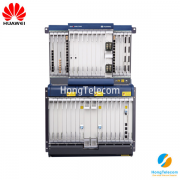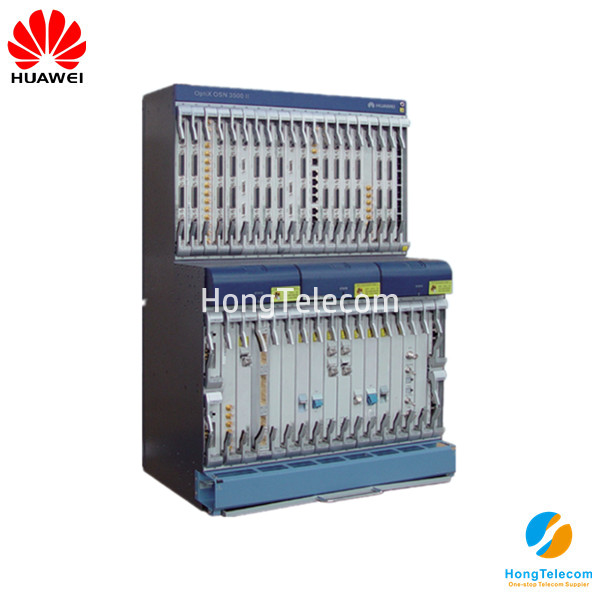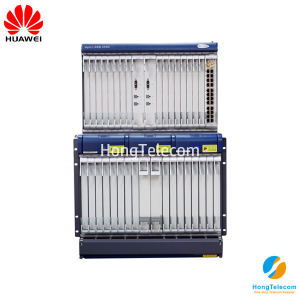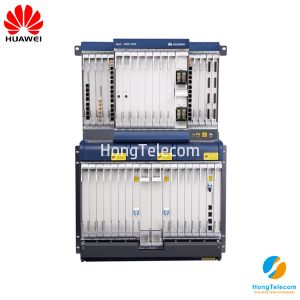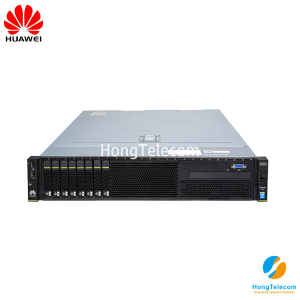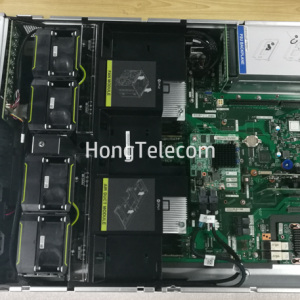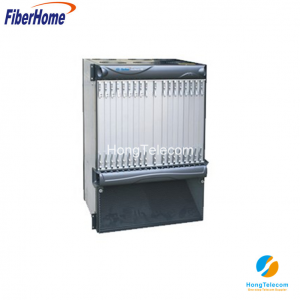Huawei OSN 3500 II
Brand: Huawei
Model:OptiX OSN 3500 II
Detail:The OptiX OSN 3500 II supported services SDH, PDH, Ethernet, RPR, ATM and DDN.
Condition: Brand New Sealed
Availability: IN STOCK
- Description
- Specification
- Ordering information
- Inquiry
The OptiX OSN 3500 II transmits voice and data services on the same platform with high efficiency. It integrates the following technologies:
- Synchronous digital hierarchy (SDH)
- Plesiochronous digital hierarchy (PDH)
- Ethernet
- Resilient packet ring (RPR)
- Asynchronous transfer mode (ATM)
- Wavelength division multiplexing (WDM)
- Digital data network (DDN)
- Automatically switched optical network (ASON)
- Microwave Technology
OptiX OSN 3500 II is mainly used at the convergence layer and the backbone layer of the metropolitan area network (MAN). OptiX OSN 3500 II can also be networked with the following equipment to optimize the investment for customers:
- OptiX OSN 9500
- OptiX OSN 7500
- OptiX OSN 3500
- OptiX OSN 2500
- OptiX OSN 2500 REG
- OptiX OSN 1500
- OptiX 2500+(Metro 3000)
- OptiX 155/622H(Metro 1000)
Boards that support the REG function
| Board | Slot (60 Gbit/s Cross-Connect Capacity) | Slot (110 Gbit/s Cross-Connect Capacity) | Description |
|---|---|---|---|
| N1SL64 | Not supported | Slots 7-8 and 11-12 | With the REG function enabled, the board is in RS loopback mode and processes only the regeneration section overhead and the frame header. |
| N2SL16, N3SL16 | Slots 2-8 and 11-16 | Slots 2-8 and 11-16 | With the REG function enabled, the board is in RS loopback mode and processes only the regeneration section overhead and the frame header. |
| N2SL16A | Slots 2-8 and 11-16 | Slots 2-8 and 11-16 | With the REG function enabled, the board is in RS loopback mode and processes only the regeneration section overhead and the frame header. |
| N1SF64, N1SF64A | Not supported | Slots 7-8 and 11-12 | With the REG function enabled, the board is in RS loopback mode and only processes the regeneration section overhead, the frame header, and FEC overhead. |
Functions and features of the EFS0 :
| Function and Feature | EFS0 |
|---|---|
| Basic functions | Processes 8xFE services and supports the convergence of 60x10 Mbit/s or 6x100 Mbit/s services. |
| Functions when being used with the interface board |
|
| Specifications of the optical interface |
|
| Format of service frames |
|
| Maximum uplink bandwidth |
|
| Bound bandwidth | N1EFS0: 12xVC-3, or 63xVC-12 + 9xVC-3
N2EFS0/N4EFS0/N5EFS0: 24xVC-3, or 126xVC-12 + 18xVC-3 |
| VCTRUNKs |
The number of supported VCTRUNKs is as follows:
Configuration principles are as follows:
|
| Mapping granularities | Supports VC-12, VC-3, VC-12-Xv (X≤63), and VC-3-Xv (X≤12) granularities. |
| Encapsulation format | Supports the GFP-F encapsulation. |
| EPL services | Supports the PORT-based transparent transmission. |
| EVPL services | Supports PORT+VLAN-based EVPL services that use the frame encapsulation formats of MartinioE and stack VLAN. |
| EPLAN services |
|
| EVPLAN services |
|
| MTU |
|
| MPLS | Supports the MPLS. |
| VLAN | Supports 4k VLANs. The VLAN technology complies with IEEE 802.1q/p. |
| Rapid spanning tree protocol (RSTP) | Supports the broadcast packet suppression function and RSTP that comply with IEEE 802.1w. |
| Link aggregation function | The N1EFS0 does not support the link aggregation function. The N2EFS0, N4EFS0, and N5EFS0 support manual link aggregation. |
| IGMP snooping) | Supports the IGMP snooping function. |
| ETH-OAM function |
|
| QoS function |
|
| LCAS function | Dynamically increases or decreases the bandwidth and protects the bandwidth in compliance with ITU-T G.7042. |
| LPT function |
|
| Flow control function | Supports the port-based flow control function that complies with IEEE 802.3x. |
| High-precision time (IEEE 1588 V2) | Does not support the high-precision time. |
| Test frames |
|
| Loopback function |
|
| Protection schemes | Supports the following protection schemes at the Ethernet equipment level and network level: |
| Ethernet performance monitoring | Supports Ethernet performance monitoring at the port level. |
| Alarms and performance events | Reports various alarms and performance events, which facilitates the management and maintenance of the equipment. |
Model:OSN 3500 II
Detail: The OptiX OSN 3500 II supported services SDH, PDH, Ethernet, RPR, ATM and DDN.
Condition: Brand New Sealed
Availability: IN STOCK

